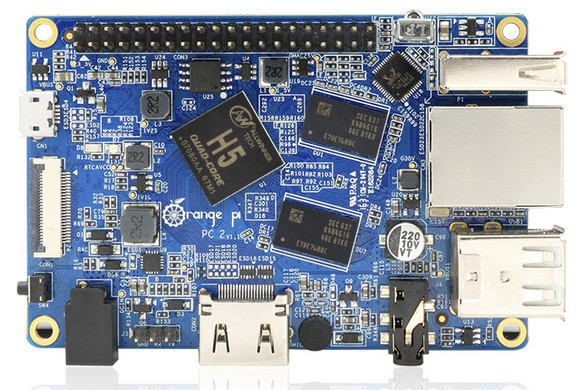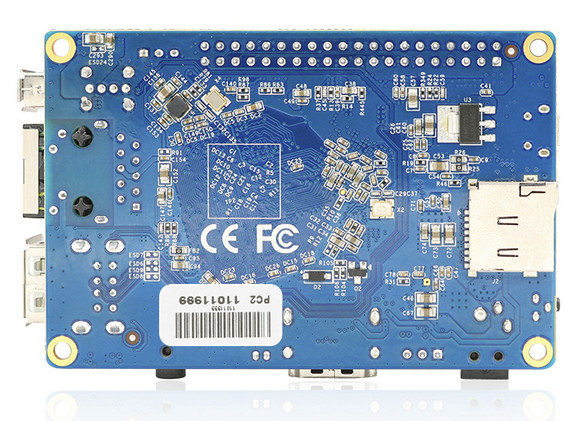Shenzhen Xunlong had already launched Orange Pi Zero, the cheapest ARM Linux board with networking you can find today, earlier this week, and I’ve just been informed the company has now listed the more powerful Orange Pi PC 2 board powered by Allwinner H5 quad core Cortex A53 processor on Aliexpress for $19.98 plus shipping. Orange Pi PC 2 specifications:
Orange Pi PC 2 specifications:
- SoC – Allwinner H5 quad core Cortex A53 processor with an ARM Mali-450MP4 GPU
- System Memory – 1GB DDR3
- Storage – micro SD card slot up to 64GB, 8Mbit SPI NOR flash
- Video Output – HDMI 1.4 with CEC support, AV port
- Audio I/O – HDMI, AV port, on-board microphone
- Connectivity – Gigabit Ethernet
- USB – 3x USB 2.0 host ports, 1x micro USB OTG port
- Camera – MIPI CSI Interface
- Expansions – 40-pin Raspberry Pi compatible header
- Debugging – 3-pin UART header for serial console
- Misc – IR receiver; Power button; Power and status LEDs
- Power Supply – 5V/2A via barrel jack. N.B.: the micro USB OTG port cannot be used.
- Dimensions – 85 x 55 mm
- Weight – 38 grams
 The board is basically an update of the popular Orange Pi PC board with a faster 64-bit ARM processor, an 8 Mbit SPI flash, and Gigabit Ethernet support. The company will be providing Android, Ubuntu, Debian, and “Raspberry Pi” images. As usual, the latter does not mean you can simply run Raspbian downloaded from Raspberry Pi website on the board, but that instead a Raspbian image with Alwinner H5 Linux kernel and bootloader will be provided. You should probably look out for an armbian images, since it’s the most popular image for Orange Pi boards. It may just take a little while to come out, since Allwinner H5 is a new processor.
The board is basically an update of the popular Orange Pi PC board with a faster 64-bit ARM processor, an 8 Mbit SPI flash, and Gigabit Ethernet support. The company will be providing Android, Ubuntu, Debian, and “Raspberry Pi” images. As usual, the latter does not mean you can simply run Raspbian downloaded from Raspberry Pi website on the board, but that instead a Raspbian image with Alwinner H5 Linux kernel and bootloader will be provided. You should probably look out for an armbian images, since it’s the most popular image for Orange Pi boards. It may just take a little while to come out, since Allwinner H5 is a new processor.
You may also be interested in Orange Pi PC 2 Schematics (PDF), and visit Orange Pi PC 2 product page for more details, that is if it loads, and it does not here…

Jean-Luc started CNX Software in 2010 as a part-time endeavor, before quitting his job as a software engineering manager, and starting to write daily news, and reviews full time later in 2011.
Support CNX Software! Donate via cryptocurrencies, become a Patron on Patreon, or purchase goods on Amazon or Aliexpress




